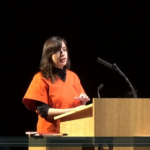
NATALIA RADYWYL
The Public Policy Lab; The School for Visual Arts
[s2If is_user_logged_in()]
DOWNLOAD PDF
[/s2If]
[s2If current_user_can(access_s2member_level1)]
[/s2If]
Public sector innovation (PSI) is an emerging multidisciplinary field that is attracting practitioners from a wide range of sectors and industries, with a correspondingly broad set of skills and experience. PSI aims to significantly improve the services that a government has the responsibility to provide by taking a user-centered, partnership-based approach, from service content development through to methods of service provision (OECD 2012). Yet the work is complex and not without risk, if undertaken without appropriate foresight, thoughtfulness, and rigor. In particular, when it comes to pursuing PSI in the design of social service policy and its provision, some of the more substantial risks lie hidden in systemic power imbalances that can easily be exacerbated, despite practitioners’ best intentions. This article uses a case study about homeless service...


